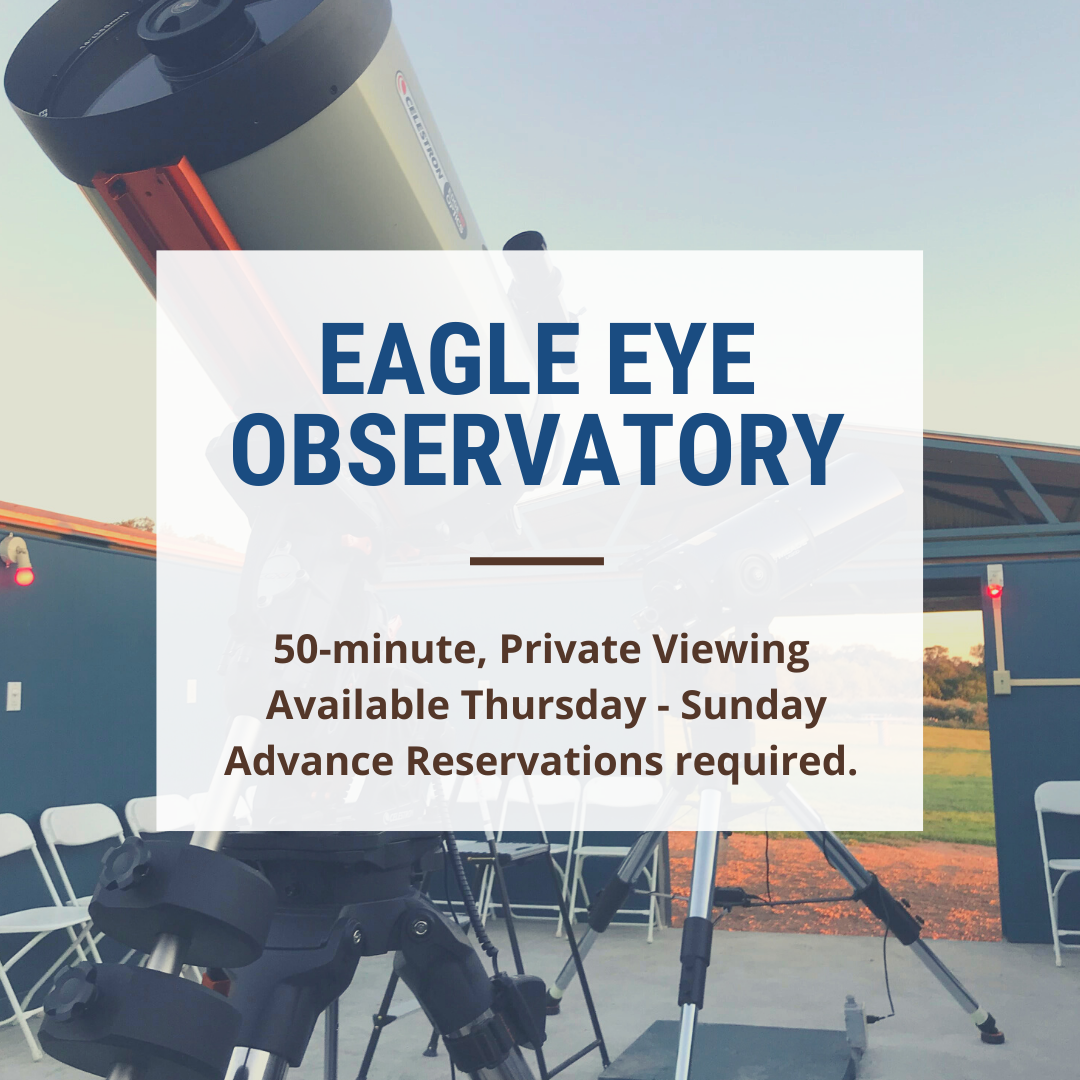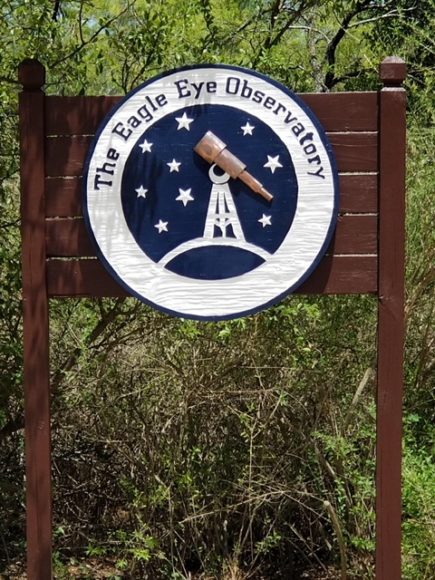Eagle eye observatory

Until further notice, EEO is available for PRIVATE viewing only.
You may call or sign-up at guest services and private bookings are booked Wednesday through Sunday. For our overnight guests, the fee is $75 for a
50-minute private viewing with our astronomer for up to 8 persons from the same family or household. Advance reservations are required.
ABOUT THE OBSERVATORY
The observatory is a sliding-roof design with two independently retractable roof sections. Each roof section may be moved to create a variable size, side-viewing slit, or both sections may be moved to open the entire structure to the sky. Eagle Eye Observatory provides modern telescopes with computer enhanced imaging and astronomical instruments.
Telescopes include:
- 14” clear aperture Celestron 1400HD f/11 reflector with Edge Technology, fully automated on an equatorial mount with Go-To targeting;
- 12” aperture Meade Schmidt Cassegrain f/10 Reflector on an Alt/Az fork mount with Go-To Technology;
- 11” Celestron Schmidt Cassegrain f/10 converted to f/2 via HyperStar lens with Mallincam Xterminator video camera.
- Orion ED100 100mm Apochromatic Refractor Telescope.
- Coronado Solarmax 90mm Double Stack dedicated Solar Telescope.
The observatory is staffed by qualified astronomers and is regularly open to park visitors during published afternoons, evenings, and special events, weather permitting. When the weather does not permit telescope viewing, EEO provides programs via a large screen television with planetarium software, videos and comprehensive interactive Q/A sessions.
message from our astronomer
OBSERVATORY PROGRAMS

twilight program
Twilight Program ~ begins at sunset
There is no telescope viewing during the Twilight Program. This program consists of an educational video and images of the night sky, as well as special target discussions on what you will see at the Dark Sky Program.
dark sky program
Begins an hour after the start of the Twilight Program
Escape to the stars with the help of Eagle Eye’s high-tech telescopes and knowledgeable astronomer. Our telescopes offer research quality views of the moon, distant stars, and deep sky objects, while also offering a vibrant, naked-eye look on the dark, night sky. Enjoy night sky constellation tours and views of celestial objects. Fun for the whole family.
next solar eclipse
April 8, 2024 is the next solar eclipse!
We are very lucky that Lake Buchanan falls within the central path of this eclipse. This means guests will be able to see the full solar eclipse from Canyon of the Eagles! The Resort will start taking reservations for this spectacular event January 1, 2023.
